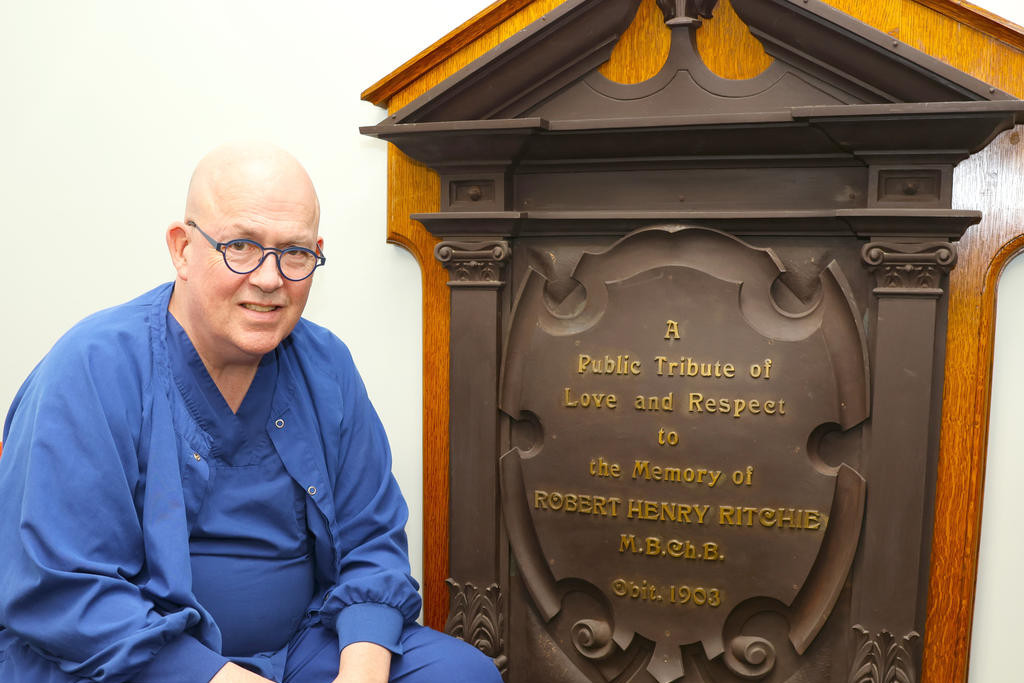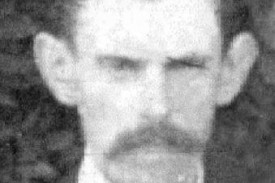General News
18 November, 2024
Medical "first" for Horsham hospital
Despite its status as a regional town, Horsham has its share of national "firsts". The instigation of both the Keep Australia Beautiful campaign and the World’s Greatest Shave are a couple that spring to mind.

But Horsham is also the home of an impressive "medical first".
When the town was still taking its baby steps in a fledgling colony, a much-lauded town physician performed Australia’s first recorded spinal anaesthetic.
Horsham was founded in 1849 and by 1902 the town of around 2500 had grown to boast a hospital, two doctors, a pharmacist and a dentist.
It was at the Horsham Hospital on January 7, 1902, that Dr Robert Ritchie performed Australia's first recorded spinal anaesthetic.
Ritchie performed a lumbar puncture at the L3-4 level, injected 2ml of two percent cocaine solution and waited for a total of 20 minutes before realising that the sensation the patient was feeling when he pinched him was pressure, not pain.
The 78-year-old man with a gangrenous right leg, prostatic obstruction and congestive cardiac failure was laid supine, and had his right leg amputated through the thigh while being administered brandy and water.
Strychnine injections were administered four hourly postoperatively.
His work was noted by revered British medical journal the Lancet, noting his cleverness as a surgeon in while performing an operation to amputate a man’s leg he injected cocaine to numb the pain and was the first medical practitioner in Victoria to inject that drug for such an operation.
Dr Ritchie’s account of the surgery included: “As the disorganised condition of his heart made it impossible to administer any general anaesthetic to allow for amputation, I decided to inject a solution of cocaine into the spinal canal and amputate through the thigh under the anaesthesia resulting from this. The patient on having the possible risks pointed out to him, was quite willing to have the operation performed.”
The adoption of Dr Ritchie’s technique of spinal anaesthesia spread quickly in Australia despite communication difficulties at that time. While the patient recovered, the story for his talented surgeon is one of despair.
Foundation prize and later matriculated at Sydney University. At 19, he moved to England to study at Guy’s University, now known as King’s College, London.
While living in England, Ritchie first showed signs of tuberculosis, known then as consumption.
His health forced a move back to Australia in 1891 to complete his medical training at Melbourne University, graduating in 1895.
He then started working as resident medical officer at Royal Melbourne Hospital.
Dr Ritchie was appointed medical officer at Horsham District Hospital on May 1, 1897, after first arriving in the town on March 16 as a locum to Dr Praagst.
He settled into Horsham life and married Ruby Langlands, the granddaughter of Horsham’s founder George Langlands.
He was known throughout the region as a clever and skilful doctor with a kind and sympathetic manner.
He was health officer for the Borough of Horsham and the south and central ridings of the Shire of Arapiles.
Dr Ritchie was also known to be very charitable. He was a committee member or office bearer of many Horsham organisations such as the A & P Society, Mechanics Institute, St John’s Church Vestry and Literary Club and Horsham Working Men’s College Council.
He had a busy surgical practice and despite his deteriorating health, was a frequent contributor to the Intercolonial Medical Journal of Australasia with a rich variety of case reports flowing from the operating theatre of the Horsham Hospital.
A year after Dr Ritchie’s ground-breaking surgery, he quickly succumbed to tuberculosis.
He died on Friday October 16, 1903, aged 33. Flags in Horsham were lowered to half-mast at the announcement of his death and shop windows were partially shuttered.
An obituary in The Horsham Times on October 20, was glowing of Dr Ritchie: "A clever and skilful doctor and estimable citizen stricken by the hand of death in the prime of his life".
People travelled from throughout the Wimmera to pay their respects at Dr Ritchie’s funeral with hundreds arriving early and the cortege to the cemetery was more than a mile long.
Ruby and Dr Ritchie had a son Frank who was a surveyor and civil engineer.
He designed Horsham’s sewerage and water systems before moving to Western Australia where he designed the Gascoyne River bridge.
He settled in Tasmania where he died, aged 97.
A stained-glass window depicting St Luke, the patron saint of the medical profession, is a feature of Horsham's St John’s Anglican Church and is dedicated to Robert Ritchie who was buried on the anniversary of St Luke.
A commemorative cast iron plaque honouring Dr Ritchie is in the Handbury Library at Grampians Health Horsham’s Arapiles building.
